Discover the essential aspects of stamping forming process, its application, and benefits in this insightful guide. Get a compelling understanding of how it works, and its advantages in various industries.
Stamping Forming Introduction
Stamping forming process is a versatile and widely used technique for shaping metal and producing high-quality parts. It involves a series of operations such as cutting, bending, and shaping to create intricate products that meet various industrial requirements. In this article, we will provide a comprehensive guide to the stamping forming process, looking at how it works, its applications, advantages, key technologies, and more. Whether you are an engineer, technician, or student, this article will help you understand the ins and outs of stamping forming process.
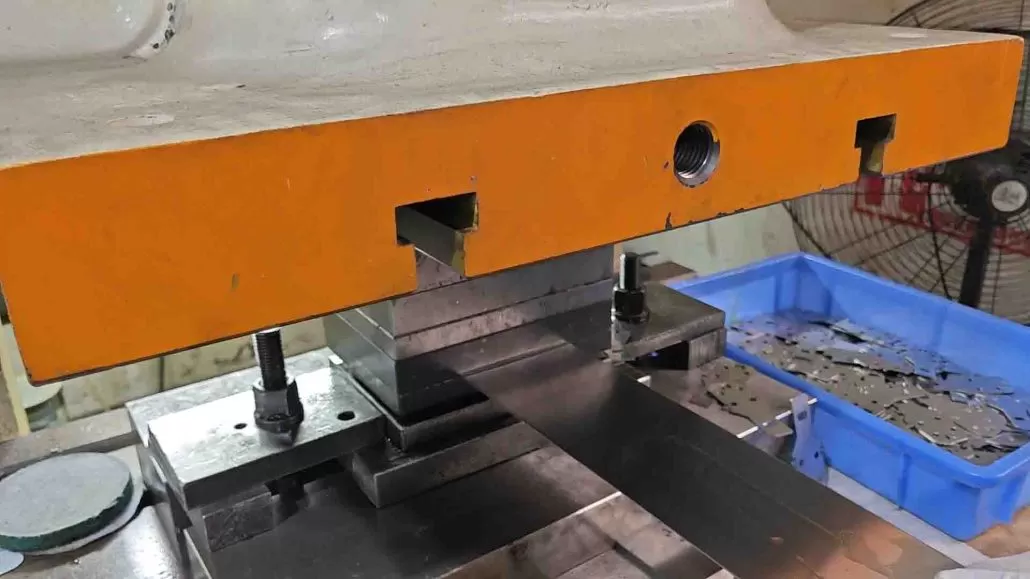
Understanding the Basics of Stamping Forming Process
In this section, we will provide a detailed overview of the stamping forming process, starting from the fundamentals such as what it is, how it works, and what are the key components involved. We will outline the different types of presses used, such as mechanical presses, hydraulic presses, and pneumatic presses, as well as the stages involved in the process. We will also provide examples of the types of materials that can be used in stamping forming process.
Introduction to Stamping Forming Process
This section will provide an introductory overview of the stamping forming process, its definition, and its application across various industries. We will also highlight the importance of the stamping forming process in the manufacturing industry, and the advantages it offers compared to other methods.
Stamping forming process is a metalworking technique that involves pressing a sheet of metal into a specific shape using a press machine. The process is commonly used in the manufacturing of various products such as car bodies, aircraft parts, and household appliances.
Stamping forming process begins with the creation of a die, which is a specialized tool designed to cut and shape metal into a specific shape. The die is then placed into a press machine, and the metal sheet is fed into the machine. The press applies a great amount of force to the metal, causing it to bend and take on the shape of the die.
There are several advantages to using stamping forming process. Firstly, it is a cost-effective method of production, as it can produce large quantities of products quickly and efficiently. Secondly, it is a highly precise method of manufacturing, as the dies used in the process are designed with extreme accuracy. Finally, stamping forming process can be used to create complex shapes and designs that would be difficult to achieve using other manufacturing techniques.
In conclusion, stamping forming process is a widely used metalworking technique that offers many benefits to the manufacturing industry. Its cost-effectiveness, precision, and versatility make it a popular choice for producing a wide range of products.
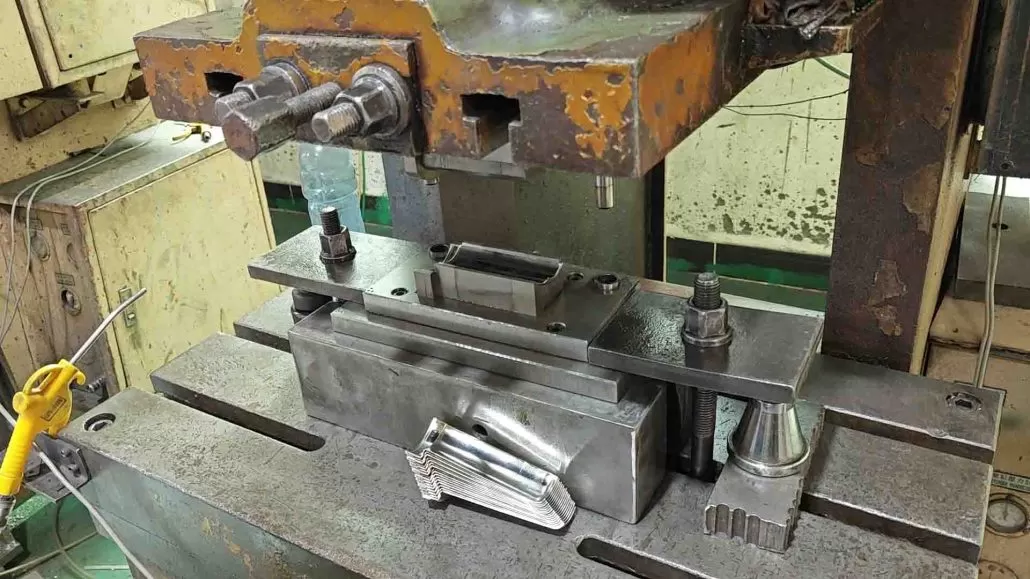
How Stamping Forming Process Works
This section will delve deeper into the working principles of the stamping forming process, including the types of presses used and their functions, how the dies are set up, and the stages involved in the process.
Stamping process is a manufacturing process in which a flat sheet of metal is subjected to a press that shapes it into a desired form. The process involves several steps that are carefully executed to ensure precision and accuracy.
First, the metal sheet is placed on a stamping press, which is a machine that applies pressure to the sheet. The press is designed to hold the sheet securely in place while the forming process takes place.
Next, a die is used to shape the metal sheet. The die is a tool that is specially designed to create a specific shape or design. The die is placed over the metal sheet and the press is activated, applying pressure to the sheet and forcing it to conform to the shape of the die.
Once the metal sheet has been formed into the desired shape, it is removed from the press and any excess metal is trimmed away. The finished product is then inspected for quality and any necessary finishing processes, such as painting or coating, are applied.
The stamping forming process is used to create a wide variety of products, including automotive parts, appliances, and metal furniture. It is a cost-effective and efficient way to produce high-quality metal parts in large quantities.
In conclusion, the stamping forming process is a complex and sophisticated manufacturing process that requires careful planning and execution. By using the right tools and techniques, manufacturers can create high-quality metal products that meet the needs of their customers.
Types of Materials Used in Stamping Forming Process
This section will provide an insight into the different types of materials that can be used in stamping forming process, including metals, plastics, and composites. We will highlight the properties of each material and their suitability to different requirements.
The stamping forming process is widely used in the manufacturing industry to produce a range of products made from different materials. The process involves shaping and forming materials into the desired shape using a stamping press. The following are the most commonly used materials in the stamping forming process:
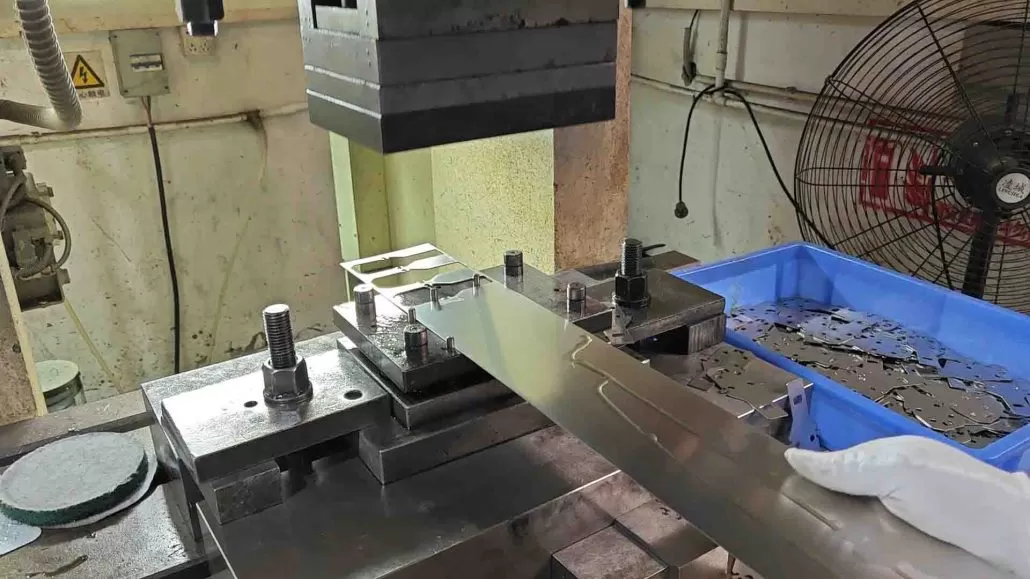
Steel
Steel is the most commonly used material in stamping forming because of its strength and durability. It is widely used in the automotive industry to produce body panels, brackets, and other components.
Aluminum
Aluminum is another popular material used in stamping forming due to its lightweight and corrosion-resistant properties. It is commonly used in the aerospace industry to produce aircraft parts and in the automotive industry to produce lightweight body panels and engine components.
Copper
Copper is a soft and ductile material that is commonly used in electrical and plumbing applications. It is also used in the stamping forming process to produce decorative items such as jewelry and metal art.
Brass
Brass is an alloy made from copper and zinc and is commonly used in the stamping forming process to produce decorative items such as door handles, nameplates, and other decorative hardware.
Stainless Steel
Stainless steel is a popular material used in the stamping forming process due to its strength, durability, and resistance to corrosion. It is commonly used in the food and beverage industry to produce equipment such as tanks, conveyors, and other components.
In conclusion, the stamping forming process is a versatile manufacturing process that can be used to produce a wide range of products made from different materials. The choice of material depends on the specific application and desired properties of the end product.
Key Technologies Involved in Stamping Forming Process
In this section, we will look at the key technologies involved in the stamping forming process, including the advancements made in recent years. We will outline the various tools and machinery used, such as stamping presses, die design software, and automation systems, and how they have revolutionized the manufacturing industry.
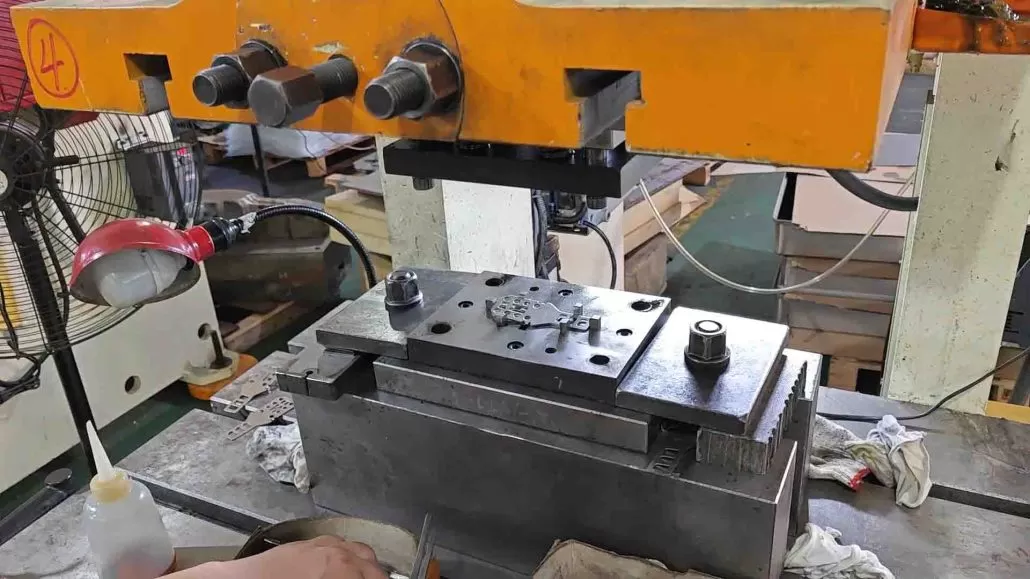
Stamping Presses Technology
This section will provide an in-depth review of the different types of stamping presses used, including mechanical presses, hydraulic presses, and pneumatic presses. We will also discuss their respective advantages, applications, and limitations.
Mechanical Presses
Mechanical presses use a motor to drive a flywheel, which generates the energy needed to power the press. They are capable of producing high forces and are often used for heavy-duty stamping operations. However, they are slower than hydraulic and pneumatic presses and require more maintenance.
Hydraulic Presses
Hydraulic presses use a hydraulic cylinder to generate the force needed to power the press. They are faster than mechanical presses and are often used for high-volume stamping operations. Hydraulic presses are also more versatile than mechanical presses and can be used for a wider range of materials and sizes.
Pneumatic Presses
Pneumatic presses use compressed air to generate the force needed to power the press. They are the fastest type of stamping press and are often used for light-duty stamping operations. Pneumatic presses are also the most compact type of press and require less maintenance than mechanical and hydraulic presses.
In conclusion, each type of stamping press has its own advantages and limitations, and choosing the right type for a specific application depends on factors such as the material being stamped, the desired production rate, and the available space and resources.
Die Design Software
This section will explain the importance of die design software in the stamping forming process, providing examples of the different software available in the market and their features.
Die design software is an essential tool in the stamping forming process as it enables accurate and efficient design and development of dies. This software helps manufacturers to reduce errors and minimize the time and cost of the die-making process.
There are different software packages available in the market, each with its unique features and capabilities. Some of the popular die design software include:
AutoForm
AutoForm is a leading software solution for die design and simulation. It offers advanced features such as material modeling, process simulation, and optimization. With AutoForm, manufacturers can create accurate and reliable die designs and simulate the stamping process to identify and correct any potential issues.

SolidWorks
SolidWorks is a popular 3D CAD software that also features die design capabilities. It provides a range of tools for designing and optimizing dies, including sheet metal design, flat pattern development, and automatic punch creation. SolidWorks also allows for easy collaboration between design teams, reducing the time and cost of the die-making process.
Logopress3
Logopress3 is another die design software that offers a range of features for designing progressive dies, transfer dies, and line dies. It provides advanced functions such as strip layout development, automatic unfolding of 3D parts, and die set design. Logopress3 also integrates with other software such as SolidWorks and AutoCAD.
In conclusion, die design software is a critical tool in the stamping forming process. By choosing the right software package, manufacturers can optimize their die-making process, reduce errors, and improve overall efficiency.
Automation Systems
This section will highlight the role of automation systems in improving the efficiency and speed of stamping forming process. We will explore the different types of automation systems, including robotics, material handling, and quality control systems, and their benefits.
Automation systems play a crucial role in enhancing the efficiency and speed of the stamping forming process. By automating repetitive and time-consuming tasks, these systems minimize the risk of human error and improve overall productivity.
There are different types of automation systems that can be used in stamping forming processes, including robotics, material handling, and quality control systems. Robotics can perform a variety of tasks, such as loading and unloading materials, assembling parts, and performing quality inspections. Material handling systems can transport raw materials or finished products throughout the production line, while quality control systems can monitor the quality of the products at different stages of the process.
The use of automation systems offers several benefits, including increased efficiency and throughput, improved product quality, reduced labor costs, and a safer working environment. By implementing these systems, manufacturers can optimize their production processes, reduce waste, and enhance their competitiveness in the market.
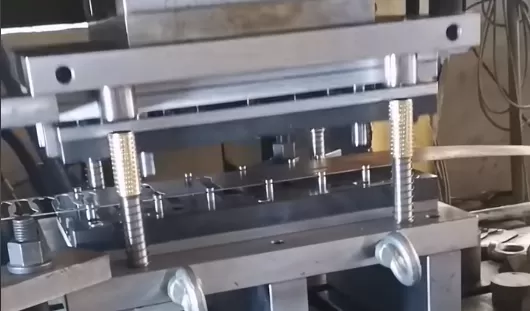
Applications of Stamping Forming Process
In this section, we will examine the various applications of stamping forming process across different industries. We will highlight the benefits it offers in terms of cost reduction, improved quality, and faster production times. We will also provide examples of the different products that can be produced using stamping forming process.
Automotive Industry
This section will provide an overview of how the automotive industry utilizes stamping forming process to produce a wide range of parts, including body panels, chassis components, and interior parts.
The automotive industry relies heavily on the stamping forming process to manufacture various components used in vehicles. This process involves the use of a stamping press, which applies pressure to a sheet of metal to form it into a specific shape. This method is widely used to produce body panels, chassis components, and interior parts.
The stamping process involves several stages, including blanking, piercing, forming, trimming, and flanging. In the blanking stage, the sheet metal is cut into the desired shape and size. The piercing stage involves creating holes in the sheet metal, while the forming stage involves shaping the metal into the desired form. The trimming stage is used to remove any excess material, while the flanging stage is used to create raised edges on the metal.
Stamping forming process offers several benefits to the automotive industry, including cost-effectiveness, high volume production, and high precision. This process also allows for the creation of complex shapes and designs that cannot be achieved through other manufacturing methods.
In conclusion, the stamping forming process plays a critical role in the automotive industry, providing a cost-effective and efficient method for producing various components. Its ability to create complex shapes and designs makes it a valuable tool for automotive manufacturers.
Aerospace Industry
This section will discuss how the aerospace industry utilizes stamping forming process to create complex and intricate parts, including structural components, brackets, and fittings.
The aerospace industry is one of the most demanding industries when it comes to the manufacturing of complex and intricate parts. The parts required for the aerospace industry must be of high quality, precise, and durable. Stamping forming process is one of the most commonly utilized manufacturing processes in the aerospace industry for creating structural components, brackets, and fittings.
Stamping forming process involves the use of a stamping press to shape metal sheets into desired shapes and sizes. This process is ideal for creating parts that require high precision, as it allows for accurate and consistent shaping of metal sheets. The process is also suitable for producing large quantities of parts in a short period, making it cost-effective for the aerospace industry.
The aerospace industry utilizes stamping forming process for creating various parts, including structural components, brackets, and fittings. Structural components such as floor beams, ribs, and spars are created using this process due to its ability to produce parts with high strength and durability. Brackets and fittings, such as mounting brackets, hinge brackets, and clamps, are also created using stamping forming process due to its ability to produce parts with complex shapes and sizes.
In conclusion, the aerospace industry heavily relies on stamping forming process for creating complex and intricate parts required for aircraft manufacturing. This process allows for high precision, accuracy, and durability, making it ideal for creating structural components, brackets, and fittings.
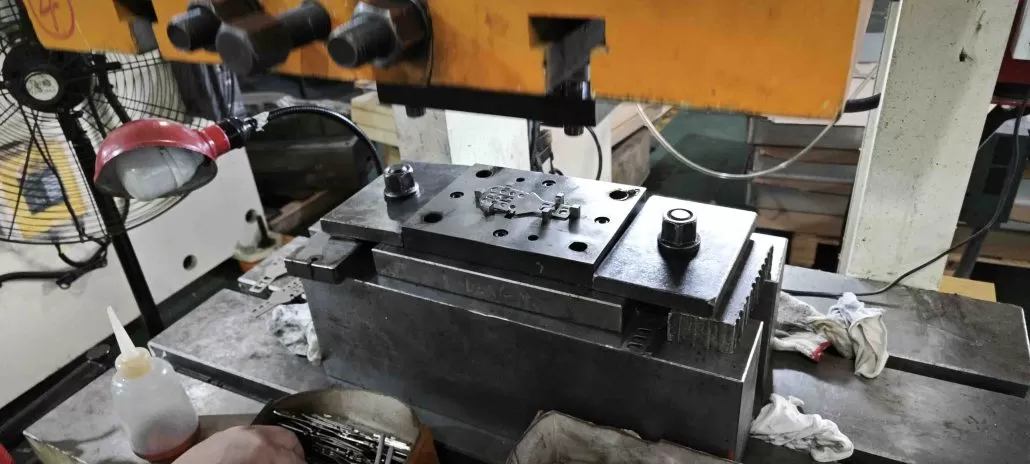
Electronics Industry
This section will highlight the application of stamping forming process in the electronics industry, including the manufacture of printed circuit board components, contacts, and connectors.
The electronics industry is one of the major industries that benefit from the stamping forming process. This process is widely used in the manufacture of various components, including printed circuit board components, contacts, and connectors.
Printed circuit board (PCB) components are essential in the electronics industry. Stamping forming process is used to produce different types of PCB components, such as connectors, terminals, and pins. The stamping process ensures the production of high-quality components with precise dimensions and shapes, which are crucial for the proper functioning of the PCB.
Contacts are crucial components in various electronic devices, including switches, relays, and connectors. Stamping forming process is used to produce contacts with high precision and consistency. This process ensures that the contacts have the correct shape and size, which is essential for proper connectivity and electrical conductivity.
Connectors are the backbone of the electronics industry, connecting various components and devices. Stamping forming process is used to produce different types of connectors, such as USB connectors, HDMI connectors, and audio jacks. The stamping process ensures the production of connectors with precise dimensions and shapes, which are essential for proper connectivity and compatibility.
In conclusion, the stamping forming process is a vital technique in the electronics industry, ensuring the production of high-quality components with precise dimensions and shapes. This process is widely used in the manufacture of printed circuit board components, contacts, and connectors, which are essential in various electronic devices.
Advantages of Stamping Forming Process
In this section, we will provide an overview of the advantages of stamping forming process, including cost-effectiveness, quality control, design flexibility, and production efficienc
Stamping is a widely used metal forming process that involves the use of a punch and a die to deform a sheet of metal into a desired shape. Here are some advantages of the stamping forming process:
- High Precision: Stamping allows for accurate and precise shaping of metal parts, ensuring consistency in the final product.
- High Production Volume: Stamping is a high-speed manufacturing process that can produce large quantities of parts in a short amount of time, making it ideal for mass production.
- Versatility: Stamping can be used to produce a wide variety of shapes and sizes, making it suitable for a range of industries and applications.
- Cost-Effective: Stamping is a cost-effective manufacturing process, as it requires less material and labor compared to other metal forming methods.
- Strength and Durability: Stamped parts are known for their strength and durability, making them ideal for applications that require high resistance to wear and tear.
Overall, the stamping forming process offers several advantages that make it a popular choice for metal forming applications.
FAQ
Stamping forming is a manufacturing process that involves pressing or stamping a material into a desired shape or form using a mechanical press. This process is commonly used to create parts and components for various industries, such as automotive, aerospace, and electronics.
Stamping forming process offers several advantages, including high production rates, consistent part quality, and the ability to produce complex shapes and forms. Additionally, stamping forming process can be easily automated, reducing labor costs and improving efficiency.
Stamping forming process is commonly used in the production of automotive parts, such as body panels, brackets, and fasteners. Additionally, stamping forming process is used in the aerospace industry to produce aircraft components, such as wing skins and fuselage panels. Finally, stamping forming process is used in the electronics industry to produce components such as connectors and heat sinks.

